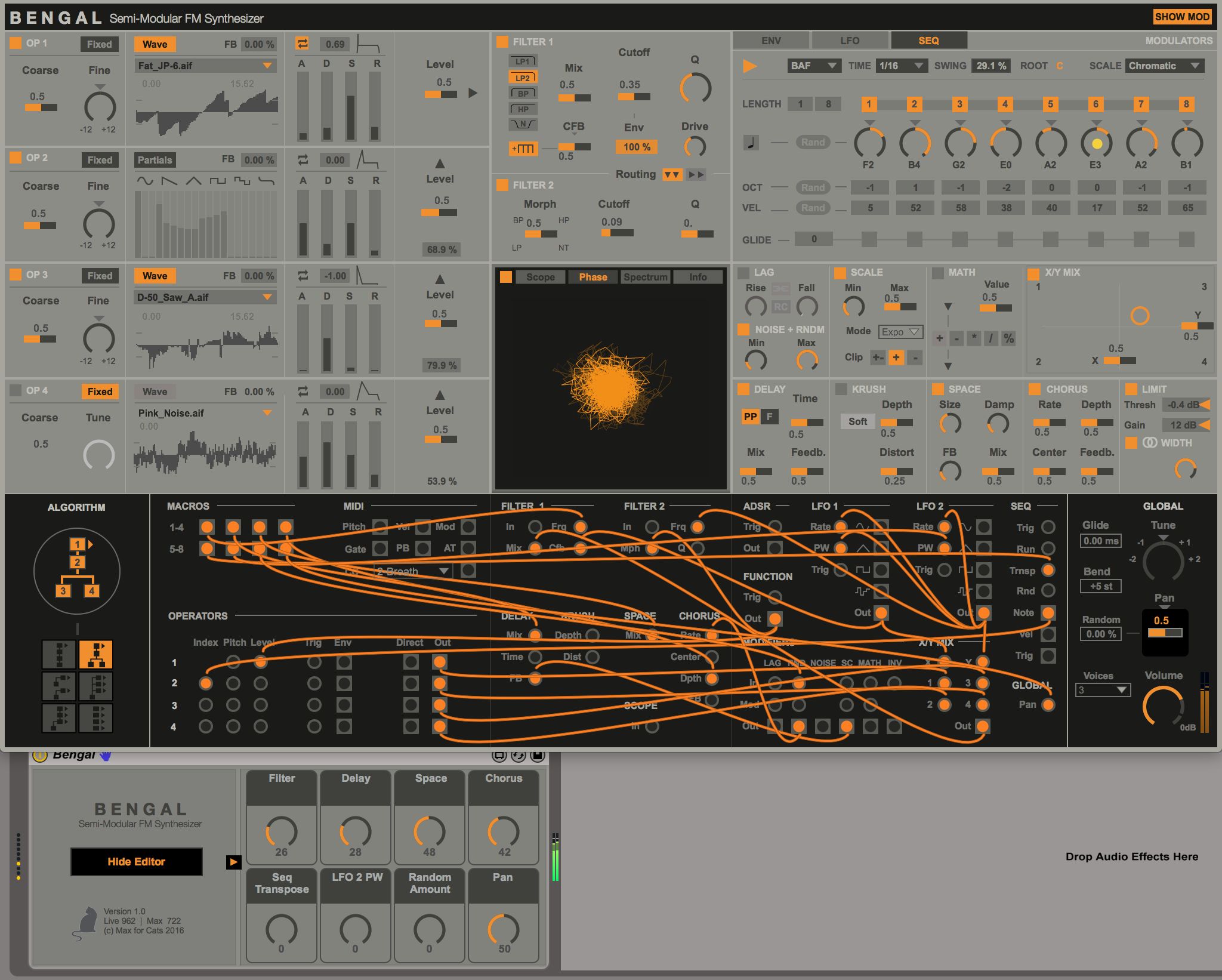

- MAX SYNTHESIZER MANUAL
- MAX SYNTHESIZER PATCH
- MAX SYNTHESIZER PRO
- MAX SYNTHESIZER SERIES
- MAX SYNTHESIZER FREE
MAX SYNTHESIZER SERIES
handling overlapping or simultaneous incoming MIDI note messages by producing polyphonic synthesis (multiple simultaneous tones in response to multiple note messages). Synth-Building with Max/MSP 1 This series of tutorials first appeared on my website between 20. Possible improvements to this synthesizer include: In our case, we're limiting the number of possible notes to 1, and implementing "voice-stealing" (turning off the previous note before playing the new one) in order to avoid the overlapping note problem described in the previous paragraph. This is the most common way of limiting the number of simultaneous MIDI notes. The poly object keeps track of the number of note-on messages (pitch-velocity pairs) it's holding, and it will turn off the oldest note (the one it has held the longest) when it gets a new note that exceeds its limit. To address that problem, in this example we use the poly object to limit the number of note messages being sent to the synthesizer, so that the synth never gets more than one note message at a time. That can be a problem when you're making a monophonic synthesizer in MIDI, because the note-off message of the previous note will come after the note-on message of the new note, and could confusingly turn off the new note. Even if the player is not consciously thinking of playing legato, it's very likely that s/he will play the keyboard in that slightly-overlapping manner. More commonly, people play legato (the Italian word for "tied", meaning connected), in order to get a smoother-sounding transition between notes, by pressing the key of a new note before releasing the key of the previously-played note. One not-so-obvious problem with designing a monophonic synthesizer is the fact that people usually don't play a keyboard in an idealized way, ending one note and then starting another. Note-on velocity values in the range 1-127 are mapped to a range of decibels from -60 to 0, and those decibel values are then converted to linear amplitude values to scale the amplitude of the oscillator.
MAX SYNTHESIZER PATCH
This patch uses the MIDI key number (pitch) data byte to set the frequency of a sawtooth oscillator, and it uses the velocity data byte to set the amplitude of the oscillator. It's nearly identical to the even more bare-bones " Overly simple MIDI synth" example, but with one improvement, the addition of the poly object, described below. It works, but it could definitely be improved.

I will insure the shipment and I don't use USPS.This is a bare-bones monophonic MIDI synthesizer that uses the pitch and velocity information from incoming MIDI note messages to control the frequency and amplitude of a sawtooth waveform. I pack everything I sell to industry standards. Please look at the pictures and ask any questions. No returns unless it is delivered damaged or not as described. We spoke to him about some of his favorite modules, the inspiration for BEAP, and. Stretta, aka Cycling '74 employee Matthew Davidson, oversaw the development of BEAP. Think of it like a modular synthesizer in Max for Live.
MAX SYNTHESIZER FREE
Sorry, I don't accept international orders just USA. BEAP, a new set of free modules for Max for Live, bridges this gap by providing a set of higher-level building blocks. The LFO can control the VCO, VCF or VCA. The VCF, VCA and VCO sections all have separate ADSR envelope generators. It has a sequencer, self tuning, robust MIDI implementation, and comes with the original power adaptor.
MAX SYNTHESIZER MANUAL
I will include a printed copy of the manual and MIDI instructions. It allows me to control the sounds quickly.
MAX SYNTHESIZER PRO
I use the Arturia Beat Step Pro (not included). All of the sounds can easily be controlled by an external MIDI CC controller. If you want to dive in and modify the sounds it's really not that difficult. The Max Brand synthesizer is a unique instrument developed in a ten year long close collaboration between composer Max Brand and sound engineer Bob Moog since. It does have 80 stock presets (most of them are great as-is) and there are 20 user patches. It only has a few onboard controls for modifying sounds. The sound quality wasn't sacrificed but they cut out some of the controls to save on construction costs. The MAX was designed as an alternative to more expensive Sequential models. It is similar to the Sequential Six-Track and Multitrack. Various synthesizers and instruments connected to Max. Just what you'd expect from a mid-1980s Sequential (Dave Smith) synth. Max, also known as Max/MSP/Jitter, is a visual programming language for music and multimedia. There are a few scratches on it and the key action has been refurbished by the previous owner but everything works great and the sounds are top notch. Up for grabs is a Sequential Circuits MAX 100% warm and fuzzy analog synthesizer.


 0 kommentar(er)
0 kommentar(er)
